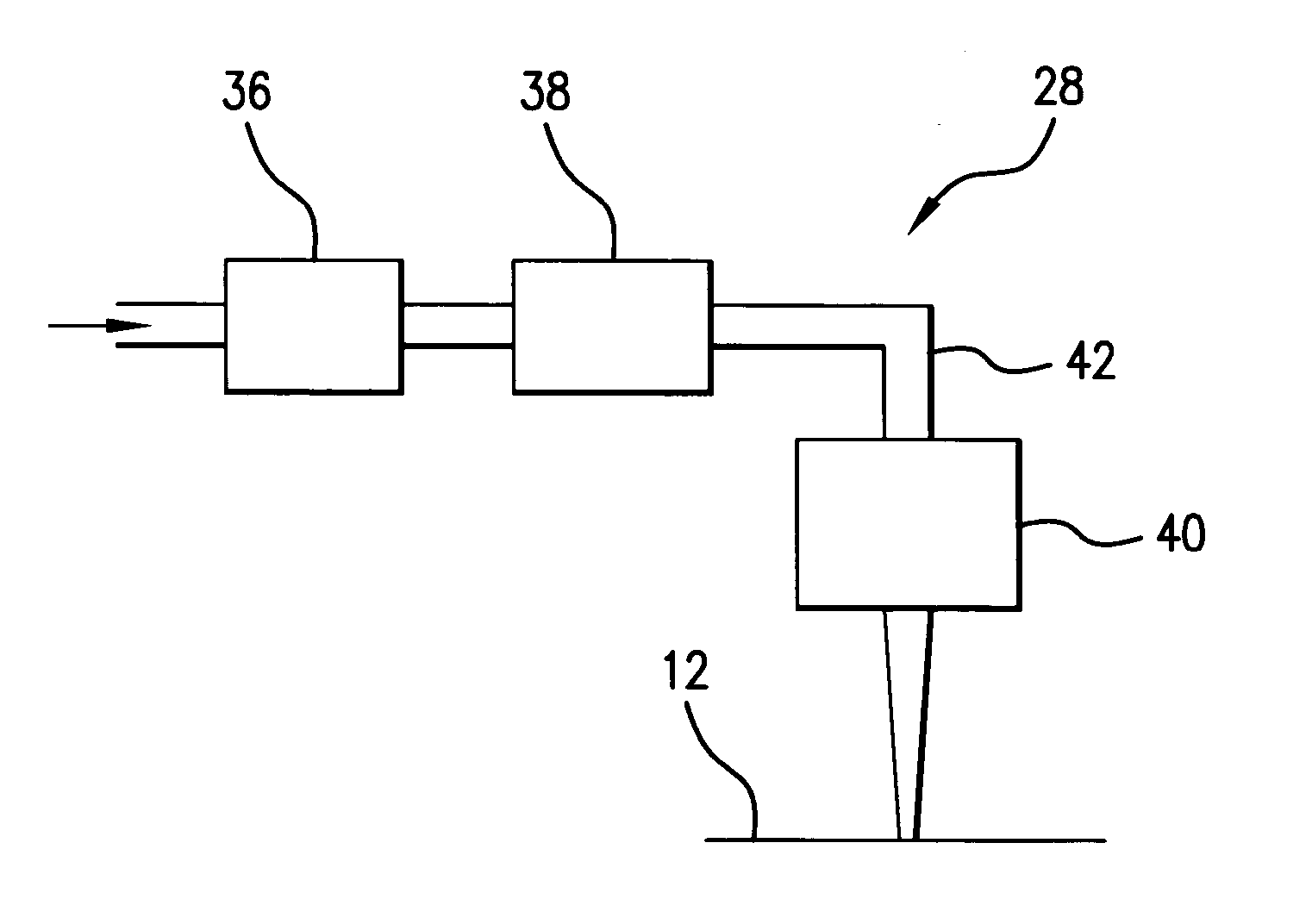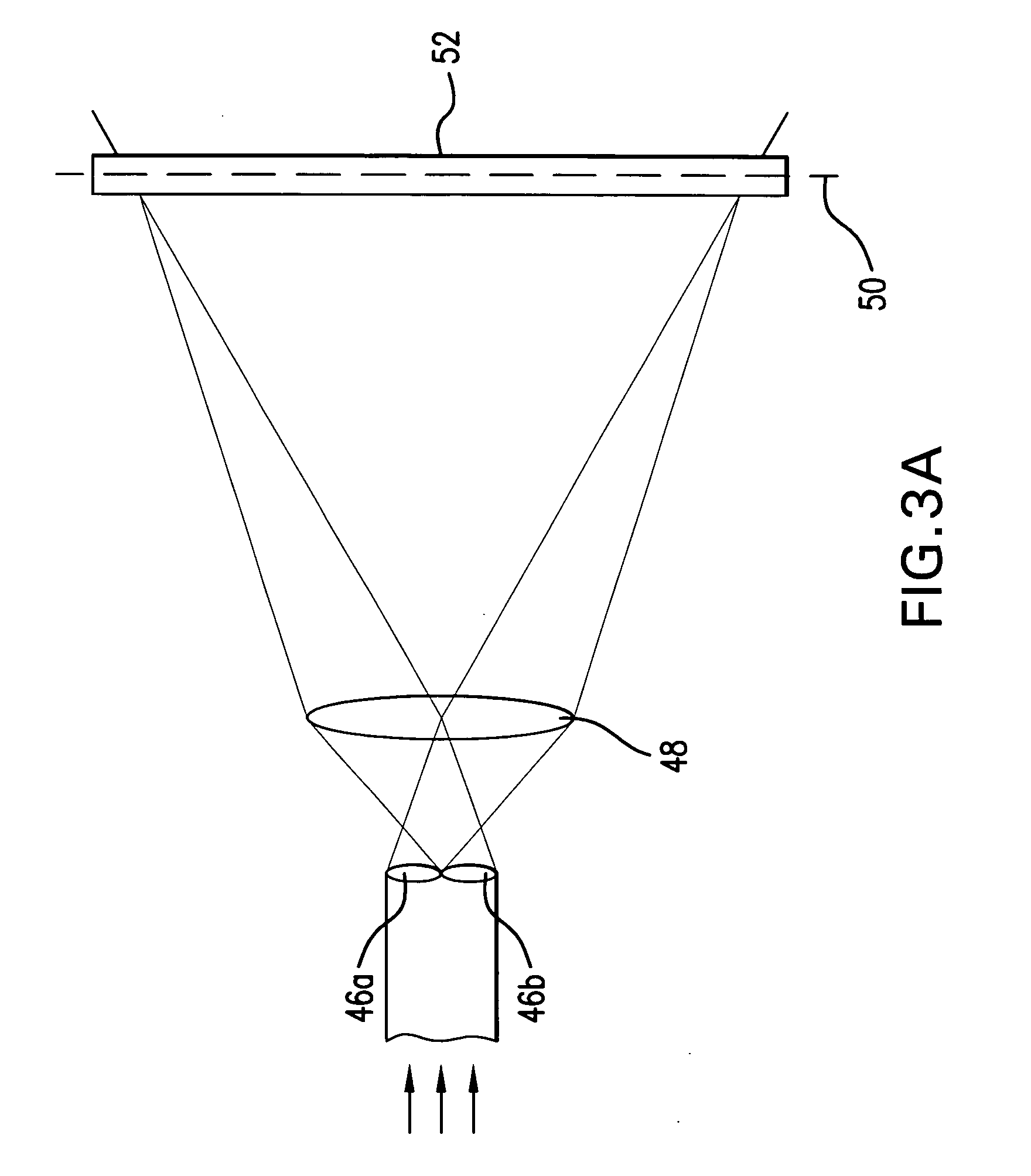Systems and methods to shape laser light as a homogeneous line beam for interaction with a film deposited on a substrate
a laser light and homogeneous technology, applied in the field of system and method of shaping laser light as a line beam, can solve the problems of poor grain quality, non-flat surface profile, unsatisfactory crystal quality of new grains, etc., and achieve the effect of reducing the intensity variation of the measured profil
- Summary
- Abstract
- Description
- Claims
- Application Information
AI Technical Summary
Benefits of technology
Problems solved by technology
Method used
Image
Examples
Embodiment Construction
[0021] Referring initially to FIG. 1, there is shown a schematic, not to scale, view of the primary components of a production system, designated generally system 10, for crystallizing an amorphous silicon film 12. As shown, the system 10 may include a laser source 20 for generating a pulsed laser beam, a pulse stretcher 22 for increasing pulse duration and a beam delivery unit 24 which may have a mechanism to actively steer the beam and / or an active beam expander.
[0022] In overview, the laser source 20 may be a two-chamber laser having a power oscillator and a power amplifier, and accordingly, is often referred to as a so-called POPA laser source. In one implementation of the crystallization process described above, a 6 Khz (6000 pulses per second) POPA laser may be used with pulse energies of approximately 150 mJ. With this arrangement, a 730 mm×920 mm film may be processed (with 60 percent overlap) in about 75 seconds. The power oscillator and the power amplifier each may compri...
PUM
| Property | Measurement | Unit |
|---|---|---|
| width | aaaaa | aaaaa |
| thickness | aaaaa | aaaaa |
| length | aaaaa | aaaaa |
Abstract
Description
Claims
Application Information
 Login to View More
Login to View More - R&D
- Intellectual Property
- Life Sciences
- Materials
- Tech Scout
- Unparalleled Data Quality
- Higher Quality Content
- 60% Fewer Hallucinations
Browse by: Latest US Patents, China's latest patents, Technical Efficacy Thesaurus, Application Domain, Technology Topic, Popular Technical Reports.
© 2025 PatSnap. All rights reserved.Legal|Privacy policy|Modern Slavery Act Transparency Statement|Sitemap|About US| Contact US: help@patsnap.com



